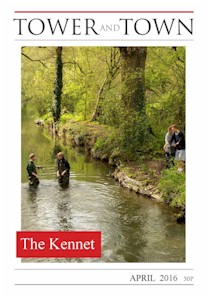

Tower and Town, April 2016 (view the full edition) (view the full edition)Magic, Moats, MonumentsFrom Silbury Hill to West Kennet Long Barrow and Avebury Stones, the rolling hills of Wiltshire are known for their mysterious monuments dating back to Neolithic times. But could it in fact be our very own River Kennet that connects these sacred sites? In 1660 John Aubrey, a natural philosopher living in Wiltshire, drew a connection between these structures and the waterway that ran between. He discovered that, as the water table was the same if not lower 3000 years ago, the wet ditch around Stonehenge to the south and the plain around Silbury Hill would have flooded every year. Even the Marlborough Mound, within the College grounds, had a moat. What Aubrey did not know, however, was the purpose of incorporating these water features and what the point of their connection was. Similar mounds to Silbury and Marlborough have been found around the world from America to Scandinavia. In Africa moats were believed to keep out evil spirits from the burial mounds. In Central America however they were the focus of ritual ceremonies and this could also be a reasonable conclusion to draw in England, too. The land surrounding the base of Silbury Hill would have flooded when the water level rose, acting like a mirror. The magnificent reflection would have appeared as though the hill was descending into the underworld and it is known that mirrors were an integral part of Shamanic ritual taking place at the time. The Shamans also worshipped the Kennet's source, Swallowhead spring located very near to the hill. So, although unconfirmed, it is very possible that the beautiful river that we pass everyday, maybe without even noticing, was also worshipped as an integral part of the survival of the civilization in whose footsteps we now walk. Isabel Sanderson |